Shimano GRX Components: Checkpoint – by MG
Without a doubt, one of the hottest stories of 2019 in the gravel world is the introduction of Shimano GRX. As the world’s first dedicated component family for drop bar gravel and ‘cross bikes, GRX offers options to fit most riders’ needs.
Today, we’ll share Guitar Ted’s impressions of the 1x GRX group he’s running on his Noble GX5, and I’ll give my thoughts on the 2x mechanical and Di2 versions of the group. Since we’ve already covered them in earlier posts, we won’t dive into specs, configurations or prices in this post.
Catch up on our earlier GRX-related posts:
- Shimano GRX Di2 Components: Getting Rolling
- Gravel Grinder News: Shimano Debuts First Dedicated Gravel Road Group (specs, configurations and prices)
On the Road with GRX 1×11
Guitar Ted has been rolling on the 1×11-speed GRX group for a couple months now, and his impressions have been overwhelmingly favorable. He’s running a 42t chainring with an 11-42t cassette for gearing, and since he’s running a 1x drivetrain, his left GRX brake/shift lever is equipped to activate a dropper post with the shift lever.
He’s still working on getting the right dropper post for his bike, so it’s a feature he hasn’t used yet. Based on my experience with the PRO Discover dropper post on my GRX Di2-equipped GT Grade Carbon Pro however, I suspect it’s a feature he’s going to like a lot.

“Shifting is… What can I say? It’s typical Shimano, with smooth, effortless lever movements and quick reaction from the GRX rear derailleur,” said Guitar Ted. “Coming off a Force 1 group, the shifts felt less obtrusive and more seamless with GRX.”
“Compared to the Force 1 Double Tap levers, the GRX levers are a bit faster to actuate, and shifts resulted in very little chain noise unless I was shifting under pressure… which GRX will do swimmingly, by the way.”
He said that, unlike Shimano’s 11-speed MTB derailleurs, the clutch on the GRX derailleur doesn’t change the shifting feel at the lever when engaged. Plus, the stability of the clutch makes GRX 1×11 a stable, silent drivetrain.
“Quiet drivetrain heaven” is the term Guitar Ted used to describe his experience so far. That’s big praise from a guy with very high standards.
“The gearing range seems fine, for now,” Guitar Ted said. “I haven’t had the opportunity to hit the big hills yet, but for my immediate area, it is spot on. I don’t miss the front derailleur, for now at least. Time will tell if I change my tune there.”
GRX 2x Drivetrain Impressions
I have been riding the 2×11-speed GRX mechanical group since late-July, and the GRX Di2 group since late-August. Now fully broken in, the parts run and shift even smoother today than on early rides. That’s amazing.
As Guitar Ted noted, shift quality is a particular strength of the GRX components. That’s no less true on the 2x iterations of the group. Regardless of whether it’s the mechanical or electronic versions of the group, shifting is smooth, easy and silent.
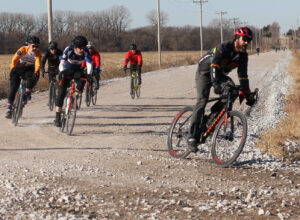
Compared to the SRAM Force eTap AXS group I was riding on our Cannondale Topstone Carbon test bike, shifts are quieter on GRX. And while shifts to larger cogs are similar in quality between the groups, GRX is noticeably smoother when shifting to smaller cogs in the rear.
Gear range is another area where 2x GRX shines when compared to SRAM’s AXS offerings. Shimano’s pairing of 31/48t chainrings with an 11-34t 11-speed cassette is excellent. The low gear is plenty low for the gravel I ride, and the 48-11 big gear is as tall as I need on the top end.
Shifting – Mechanical or Di2?
When running a 2x GRX drivetrain, Di2’s ability to automatically, simultaneously shift both derailleurs is a distinct advantage. It enables the drivetrain to minimize the gearing difference of a chainring shift with compensating shifts in the rear. The electronic shifting also ensures every shift is completed consistently and successfully. It’s virtually impossible to miss a shift.
I have my GRX Di2 set up to make a two-cog shift in the rear whenever I change chainrings, which makes the massive 17t jump a lot easier for my legs to manage. With Di2, this all happens with one click of a button, but on mechanical GRX, I need to work both shifters to do the same thing.
Over the course of a long ride or race, the reduction in hand effort can be a big deal. In 2018, after I finished the 350-mile Dirty Kanza XL, my hands and forearms were extremely sore from all the shifting required over 34+ hours. As a result, I now place a higher value on the ease of shifting and automation GRX Di2 offers, particularly for long rides.
That said, there’s very little to want for in the 2×11 GRX mechanical drivetrain. In fact, I chose to race our GRX mechanical-equipped Niner (over the GRX Di2-equipped GT) in a recent 40-mile gravel event. It performed flawlessly, and the mechanical shifters may have actually been easier to operate while wearing my thick winter gloves.

From my perspective, GRX mechanical is as good as cable-operated drivetrains get, with smooth positive shifts to both larger and smaller rear cogs or front chainrings.
The clutch-equipped GRX rear derailleurs keep the chain stable over bumpy roads, regardless of gear combination. I haven’t dropped a chain on either GRX drivetrain – impressive considering the rough roads and trails both test bikes have been subjected to. The large 13t derailleur pulleys guide the chain smoothly and consistently, even in inclement conditions.
For most riders, the decision of mechanical or Di2 drivetrain will boil down to personal preference and/or budget. It’s considerably less expensive to equip a new gravel bike with mechanical GRX, and clearly some folks aren’t interested in electrifying their drivetrain.
After riding both the mechanical and Di2 groups, it’s difficult to deny the advantages of Di2, particularly with a 2x drivetrain. That said, there’s no clear cut ‘winner’ that’s right for every rider. Each rider will have a unique set of wants and needs. Fortunately, Shimano has equipped GRX with enough options to satisfy most riders. Choice is a good thing!
GRX Brakes – Raising the Bar
Guitar Ted says the GRX hydraulic disc brakes are the best Shimano drop bar brakes he’s used to date. Here’s his full take on the GRX brakes:
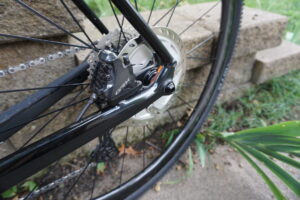
“The lever travel is about half that of previous Shimano drop bar hydro brakes I’ve used, with a bit more positive feedback and better bite. I’m really impressed! Additionally, the shaped GRX lever, while not the high-pivot type (which is only on the Di2 levers for now), was excellent.”
“Shimano did their homework here, as I found every curve and shape to be ergonomically pleasing. In fact, I was surprised by how natural the lever felt at times, as opposed to searching for a nice place to rest the fingers. It seems like there aren’t any bad places on the levers at all. The hoods are also much improved. The new texture and rubber feel great with bare hands, and I imagine gloved hands will find a good grip as well.”
I can confirm that gloved hands do, in fact, get a good grip with the GRX hoods, and Guitar Ted’s assessment of the performance of the GRX hydraulic disc brakes is spot on as well. They’re top notch.
GRX Lever Comparison – Mechanical vs. Di2
Since I’m testing the 2x mechanical and Di2 variants of GRX, I can speak to the effect the levers have on ergonomics and braking performance.
While it’s easy to feel the increased leverage the GRX Di2 levers’ 18mm higher pivot point offers, the mechanical levers are still very good. That said, the Di2 levers take brake power and modulation to a new level, impressive considering the calipers, pads and hoses are all the same.
Also, for off-road drop bar riders, the GRX Di2 hoods represent a distinct step forward in terms of hand retention. The hook shape at the top of the hoods, combined with the increased leverage of the raised brake lever pivot, make it easy to grip and control the bike, especially over bumpy terrain.

Where the mechanical levers have more of a slope upward as you move forward on the hoods, the Di2 hoods transition to vertical in the same space. The pocket this creates holds the hands noticeably more securely over rough ground, enabling me ride with a more relaxed grip on the lever.
When combined with the improved brake lever pivot point and easy to use Di2 shifting, the next-generation ergonomics of the GRX Di2 levers make long rides just a bit easier on the hands.
GRX Wheels – Solid Performance & Value
Shimano’s GRX wheelset offers up impressive performance and competitive weight (1,650g/set in 700c), all at an affordable price. They have been easy to set up tubeless with a variety of tubeless-ready tires, and Shimano’s renowned cup-and-cone bearing system rolls smooth and is easy to service.
Guitar Ted and I felt the ride quality of the GRX wheels was excellent, and durability has been solid as well, despite some rough use. Guitar Ted elaborates:

“I accidentally dead-headed an embedded rock about the size of a child’s head on a recent ride, and the stiffness of the GRX wheels was such that the rim did not deflect oddly. Instead, it tracked up and over the rock and I was able to retain control. Nice!”
The GRX wheelset is a great example of the unbeatable price to performance Shimano products bring to the table. It weighs less than 100 grams more than the awesome Cantu Rova wheelset we tested last year, yet it costs less than 1/3 as much ($420 vs $1,595). While the Cantu wheels use wider, deeper carbon rims, the overall performance the GRX wheels deliver is surprisingly similar. This makes the GRX wheelset one of the best value wheelset upgrades available today, in our opinion.
The Verdict on Shimano GRX… For Now
If you’ve made it this far, you won’t be surprised to learn that we’re quite smitten with Shimano GRX. Regardless of configuration, GRX represents a true step forward for dirt-going drop bar bikes. GRX components are also reasonably priced for the performance they deliver, and for the most part, are compatible with existing Shimano road groups. As such, GRX is a reliable, cost-effective choice when building a new bike, or replacing worn parts on an existing ride.
We’ll continue riding our GRX-equipped test bikes and will report back on our long-term impressions of the group in our “At the Finish” post. Look for that to come in early 2020.
In the meantime, you can learn more about Shimano GRX at Gravel.Shimano.com.
Please Note: Shimano sent the GRX components for test and review to Riding Gravel at no charge. We are not being paid nor bribed for this review and we strive to give our honest thoughts and views throughout.


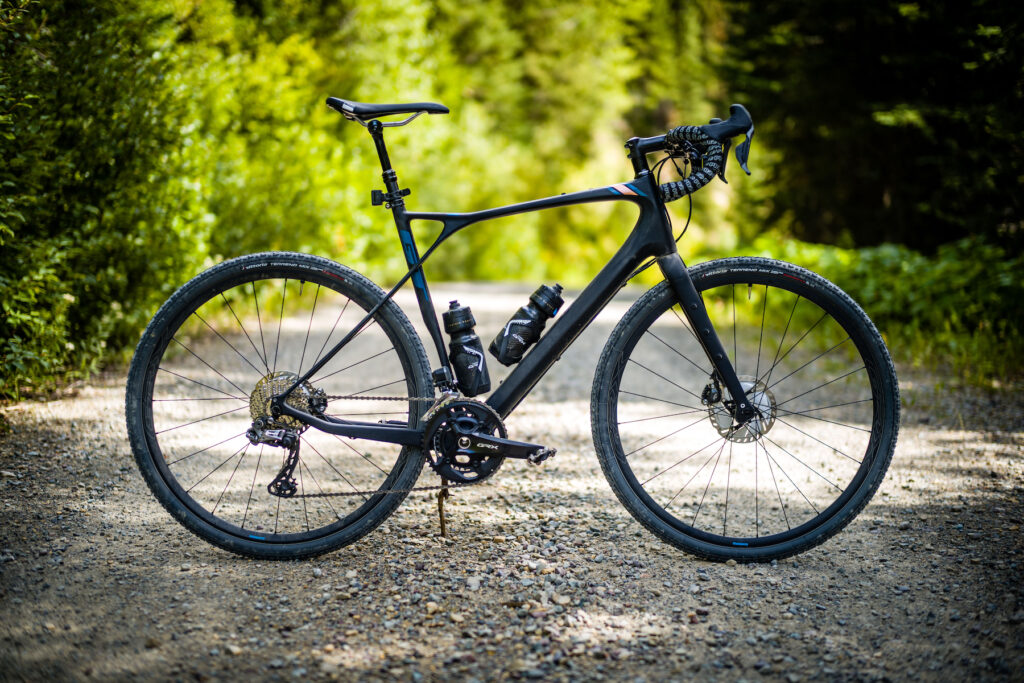
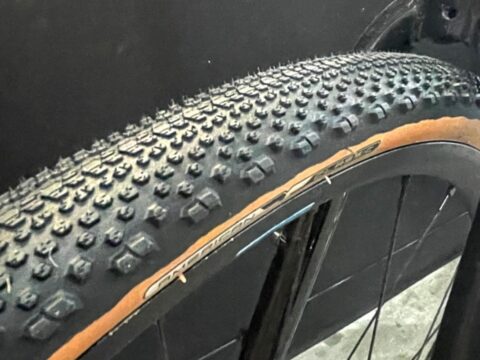
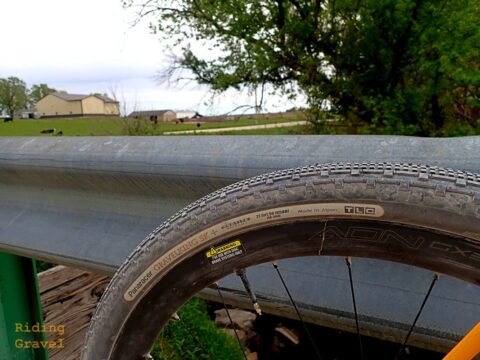
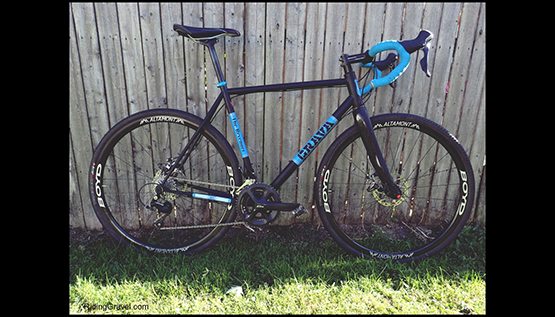
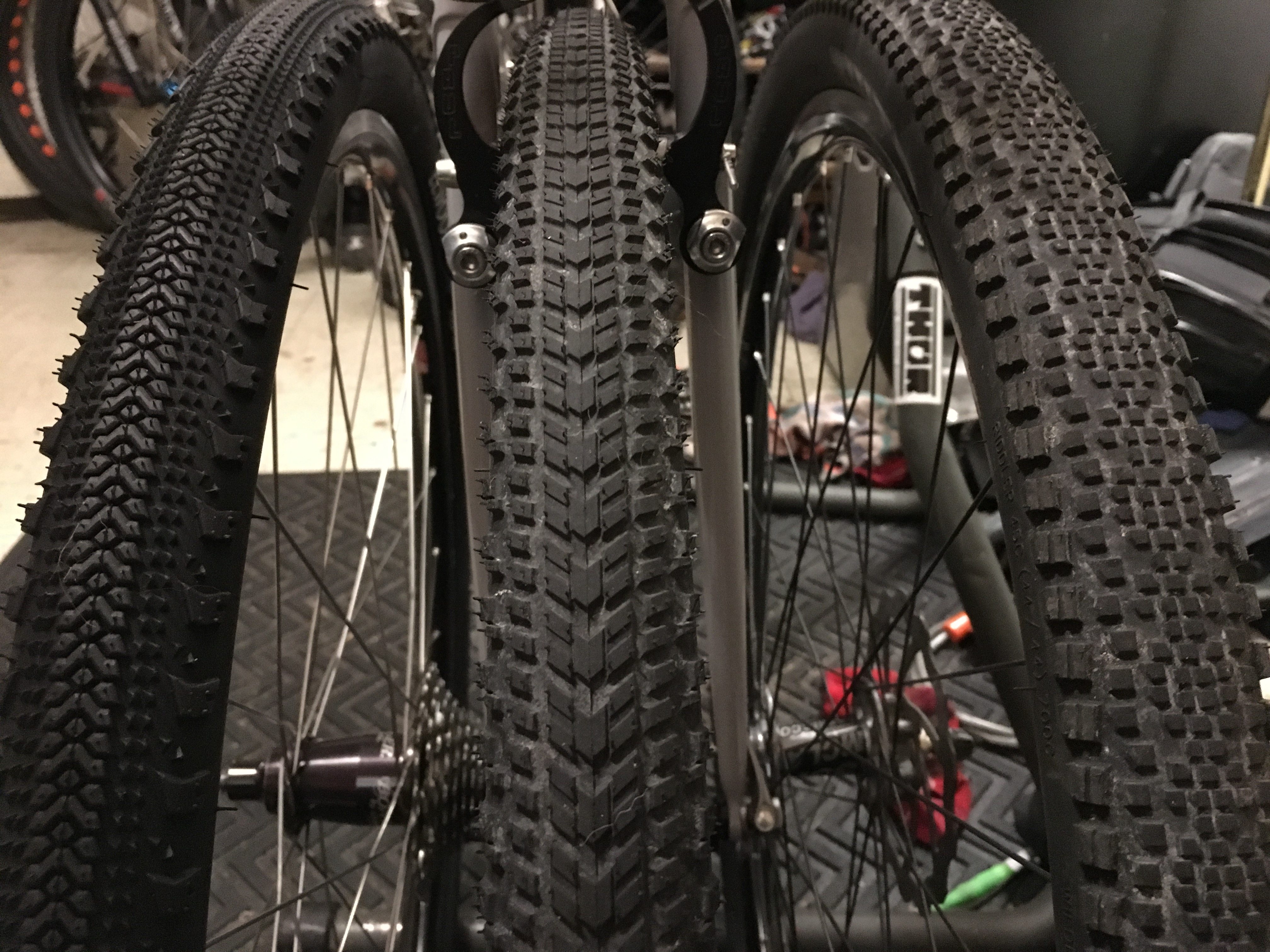
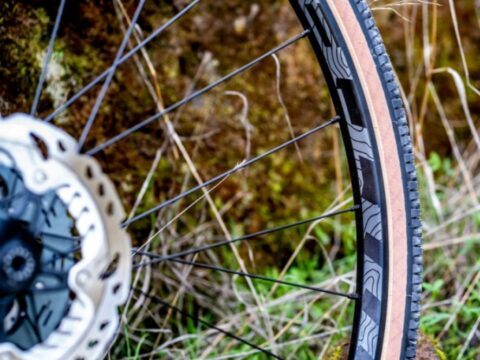
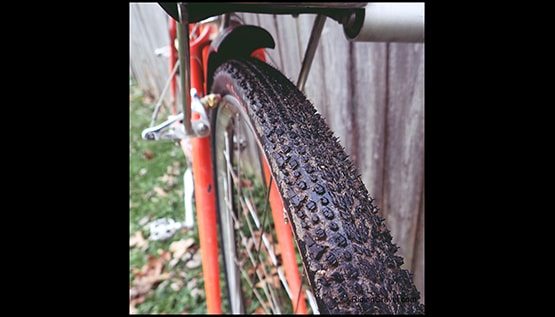

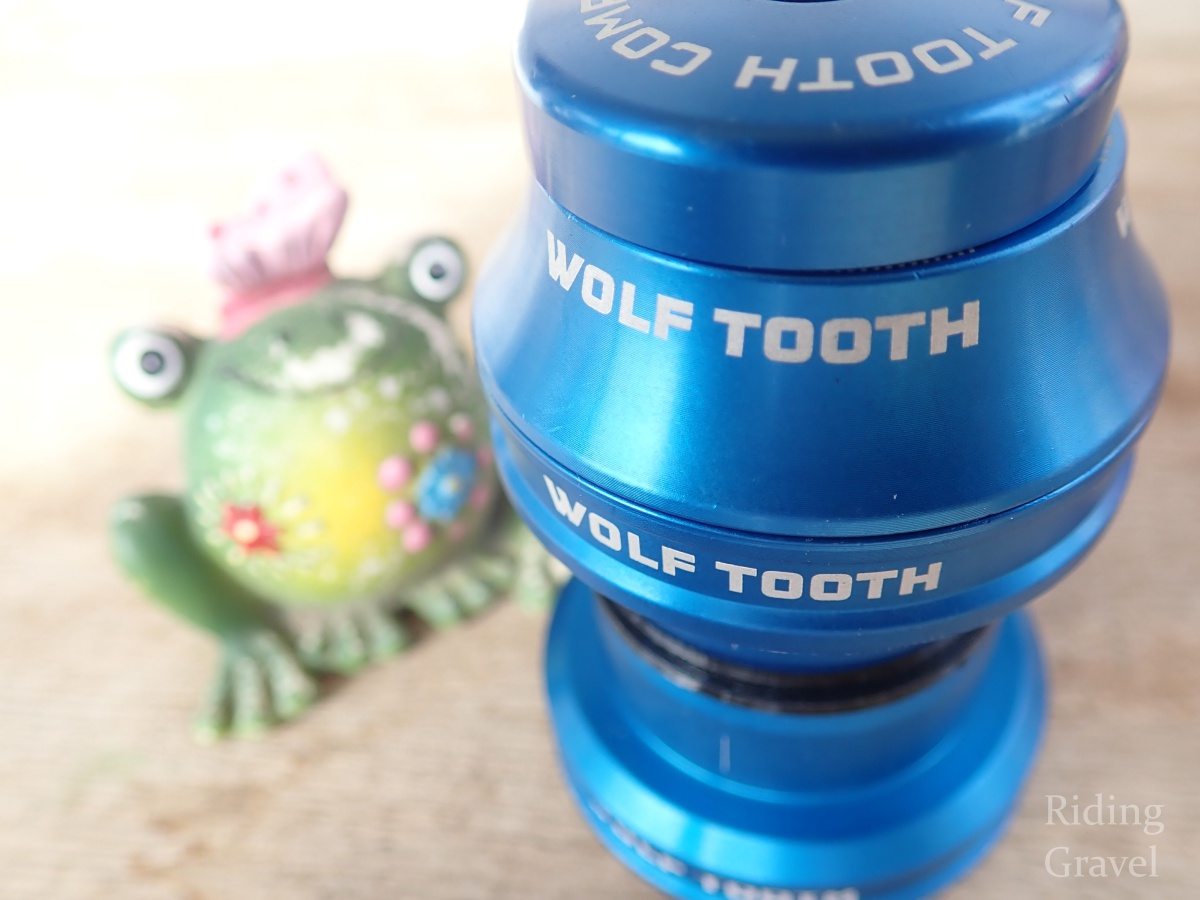

Damn, Matt. Thanks for doing the work. Grateful to have your perspective.
Thanks @Eric Wendt! I appreciate you reading. Cheers!!
Hoping for some advice. Unfortunately I purchased a gravel bike before really understanding what I would need for gearing when it comes to mixed terrain/gravel rides. I have Sram Force AXS 2x which leaves me with a lowest gear of 33/33, not enough for terrain in the Adirondacks and Vermont where I ride. My debate is this, I am keen to take the Force AXS 2x drivetrain and put it on my dedicated road bike, a worthy upgrade there. In your opinion should I do the Force/Eagle “mullet build” on the gravel bike and go 1x or stay 2x and get the GRX Di2 groupset? Cost is essentially a wash between the two when considering the road build. Sorry for the lengthy post, I appreciate any insight!
Thank you,
Eric
Hey @Eric – Thanks for your questions. Personally, in your shoes, I’d go with a 2x GRX setup for your gravel bike, but set it up with a 11-40t cassette on the rear. I know this isn’t something Shimano condones officially, but I’ve seen it done successfully, provided you get the chain length right. A 31/40 low gear is a pretty darn low gear. Heck, even with the 11-34t cassette, we climbed a ton of really steep stuff in Montana at the GRX press intro, and I wasn’t wishing for lower gears, but of course YMMV there.
You’d need to replace a lot of parts to make your SRAM bike the 1x mullet bike. The shifter/brake levers and brakes would be the only parts you’d be able to keep.
The Force AXS parts really should be on your road bike… 😉 Now you can blame me. But be sure to let me know what you end up doing, please. The good news is you’ve got some great options.
Cheers,
MG
Thank you very much for the reply, it is greatly appreciated. I did see a video showing the 11-40t cassette shifting pretty darn well. I think you convinced me to stay 2x and go with GRX. As much as I was trying to convince myself to go 1x, I can’t let go of the thought that the 2x drivetrain will suite my purposes better since many rides will be 50/50. I’ll be sure to let you know what I wind up doing and thanks again!
Eric
@Eric – If you go the GRX di2 route you can also throw the SRAM 11-36 cassette on there if you need a bit more gear. The 2x gives a much better option for those of us on the east coast.
Thank you Joey, really good advice and I think the 11-36 may be ideal. Thanks again!
“Gear range is another area where 2x GRX shines when compared to SRAM’s AXS offerings. Shimano’s pairing of 31/48t chainrings with an 11-34t 11-speed cassette is excellent.” Maybe I’m calculating wrong but that’s less than a 1×12 10-50 AXS setup that has 500% range. (48/31)x(34/11) = 478%. Even using 11-36 would only equal the SRAM 1x.
@Cliff- Gear range is one thing. How it is applied is quite another. What isn’t being said here is that jumps between gears, which affect cadence, and how the chain comes off that single drive ring and engages with those rear cassette cogs on the fringes of that range on such a big cassette all matter. Perhaps it should have been written as “This is where 2X GRX shines…..”
Advantages for mountain style drive trains are not necessarily good for gravel, back roads, or the like. Range is one part of the equation, but it doesn’t define the drive train in terms of effectiveness overall. Everything should be considered- chain line, gearing jumps, derailleur performance, and other facets not often brought up. What each individual needs are going to be different also. You may need a 500% range while someone else would never fully gain the use out of a wide range like that.
MG was referencing “another area” of GRX’s choices where one might derive an advantage- or not. But the real point here is that with GRX, you have these built in options which cover a lot of ground for “most riders”. Of course- there will be exceptions, but what we feel is that Shimano has offered a turnkey group for gravel/back road riders that offers enough choices that it rises above what else is offered specifically for gravel riders.
Oh, and what is offered specifically for gravel riders from other companies? That’s a good question to remember here as well.
No doubt there are advantages to 2x but range does not seem to be one of them. At least in the current Shimano and SRAM offerings. I’m just surprised since it would seem 2X indeed could have larger range but then they don’t seem to want to offer it.
@Cliff- I think what we are seeing is that the component manufacturers are unwilling to compromise- not on granting you your wish for a wider range gearing, but on how the components currently manufactured would perform doing what you wish for.
In my opinion, the current geometry and mechanics of the derailleurs cannot function as they do with wider ratio gearing (larger cassette cogs, or wider spread at the crank set, or both things simultaneously) It’s possible to do this with what is available, probably, but not within the tolerances and performance standards required by the manufacturers, most likely.
To get this idea to work would then probably require new components. For what? A very small market? remember, if the numbers are there, the parts get made. So, I would assume there just isn’t enough push for this to get it made. This doesn’t say “no one wants it”, but rather, not enough are being heard from that do.
On another note- Are triple crank sets what we are really missing here? That was the solution to this issue at one point, which was abandoned. Imagine an electronic front/rear derailleur system with sequential shifting that was based on a close stepped, wide ratio triple. Hmm……..
@Guitar Ted – I like where you’re going there! That said, I think these days a lot of folks look at front derailleurs as the manual shifting (automobiles) of the post-millennial world.
I’m not an expert, so I’m mostly just raising questions rather than arguments. but does 3x extend the range any? you still calculate the range based on the small and largest chainring on the front, right? So you could have 26-36-46 and the range would be the same as 26-46 2x.
Also, just to clarify, I’m not asking for more range than 500% really. It just seems the 2x systems being sold don’t have more than 500% range – if even that much – so unless you want one of the other advantages with 2x why bother. But again I’m just discussing this, not making firm arguments
@Cliff – I think you’re on the right track. There are a lot of ways to achieve a wide range drivetrain. If you don’t mind the jumps between gears, a 1x is a good solution. For me however, while I’m okay with riding and testing 1x drivetrains on my gravel bikes, I choose to run 2x drivetrains on the bikes I own. I prefer the smaller gaps between the gears on gravel, and if drivetrain efficiency is important to you, recent testing suggests 2x holds a commanding led there (see https://www.velonews.com/2019/05/bikes-and-tech/gear-issue-friction-differences-between-1x-and-2x-drivetrains_493185). On a 150-350 mile gravel ride, those losses due to friction add up.
That said, I run 1x on all of my mountain bikes. There, I’m okay with larger gaps between the gears, and appreciate the design freedom not having a front derailleur gives frame designers.
I guess for me it’s more of a ‘horses for courses’ sort of thing, but everyone has a slightly different set of priorities.
Thank you Cliff, good point for sure. My bigger dilemma was 1x vs 2x, all I wanted was a 2x setup that offered a bit more range on the low end than the AXS does. I tried to convince myself to go 1x but don’t think I can get there for this bike/use. On my mountain bike, 1x all day ha! Thanks again.
Thanks @Guitar Ted. Well said.
I’m curious to know how that big (17t) gap on the 48-31 GRX crankset shifts. Did you gents notice any problems (i.e., dropped chains, slow or awkward shifts, etc.) with that chainring combo?
And…for the record, I have several bikes set up with 50-34 chainrings and 11-42 cassettes. Three of these use older Ultegra Di2 long-cage rear derailleurs with Wolf Tooth Goatlink hanger extensions; the fourth uses only an RX-800 GS Di2 (the immediate predecessor of GRX?) rear derailleur (i.e., with no hanger extension). All of these set-ups shift the entire cassette range — even to the 42t cog — flawlessly!
Nice… Thanks for the perspective on your setups, @jw. I know that’ll be very useful to a lot of readers. I’m currently running an 11-40t XT cassette on our 2x GRX Di2-equipped GT Grade Carbon Pro, and it works great. I had to add B tension, but that was an easy adjustment to make.
It still amazes me to say this, but the GRX front derailleurs, both mechanical and Di2, manage the 17t jump flawlessly. If you didn’t know the jump was that big, you’d never know it from the quality of the shift. Shimano has their front shifting so dialed, which is one reason I have a tough time going away from a 2x for gravel use.
Thanks for reading!
We can use an 11-40 XT cassette with the new GRX groupo? Interesting! I just built-up an All-City Cosmic Stallion with the new GRX 2×11 mechanical using the 11-34 cassette. If I could use the 11-40…I may have to try that for a bit more low-end capability!
Am I missing anything?
Thanks!
Hey @RCK – Officially, it’s not a Shimano-approved setup, but it does in fact work. It’s best to add about three full links to your chain, so it might be an upgrade to save for when you replace the chain that’s on there now. With the chain cut to the correct length for the 34t cassette, it’s very tight on the second from the largest cog, and the 48×40 combo is not possible. In reality, you shouldn’t be riding big-big anyway, so you could get away with it on this chain, but I’d recommend having a couple of extra links, in case something goes wrong on the road.
Better to be safe than sorry, my dad always says… Crap, I guess I do too.
Cheers!
@RCK – I’ll also add that, while I have done this, please don’t hold me responsible if it doesn’t work for you. The only reason I even tried it is because I have a pretty deep parts bin, so I had the cassette laying around. It didn’t cost me anything, so consult with your mechanic if this is the route you choose.
Thanks for reading!
I got the 48-31 crankset right when it became available, paired with the new GRX FD…And the shifting is flawless. The rest of my system is Ultegra Di2, with an 11-34 cassette.
I think the crankset is the best part of the new GRX components. Even on my road bikes, I don’t need a 50t chainring when running an 11-xx cassette, as I am not able to push such a large gear. So, the 48-31 chainrings allow me to use a cassette with a narrower range (=fewer gaps) and still have adequate low gearing for big climbs.
Nice review, thanks. I’m still debating between mechanical and Di2 for my new build this spring. While I like the simplicity of mechanical, the Di2 seems like it might be better for long gravel events in mixed rainy/muddy weather – though I could be wrong about that.
On the Shimano description of the GRX front derailleur, it reads “more cable routing options.” What does that mean? Bottom pull and top pull? Can it be used with full length housing from the bottom and/or the top?
Great review!
Hoping get advice from you, which one is better when braking from the hood? Di2 or mechanical ones?
And can i use the GRX 1x rear deraileur with 11-34 cassette?
Thanks,
Andrew